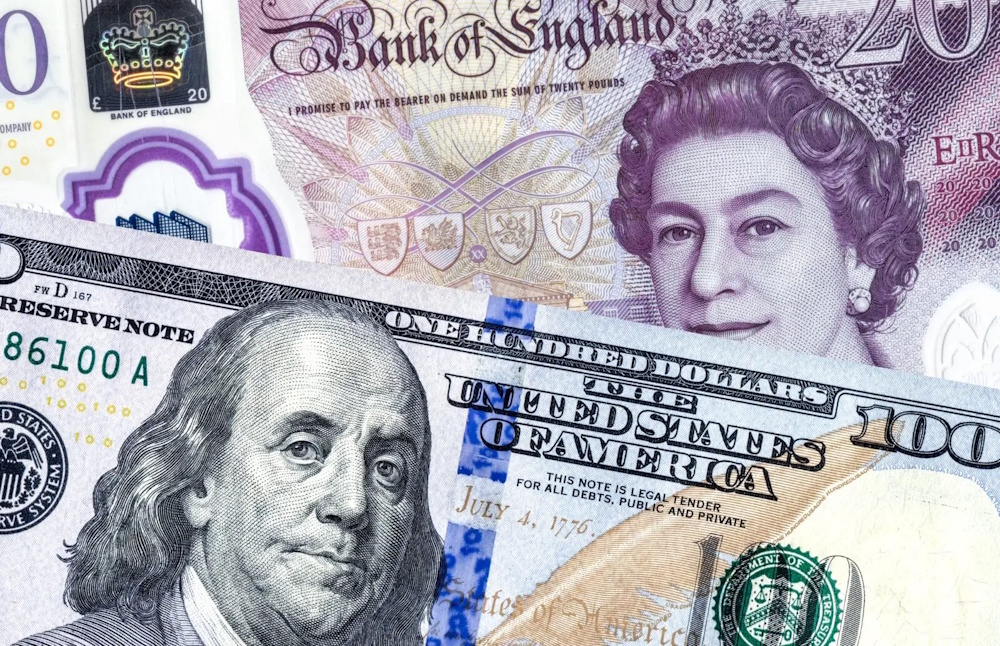The British Pound has found stability around 1.3360 following a week marked by significant fluctuations driven by changing monetary expectations across the Atlantic. The GBP/USD pair experienced a rebound after a two-day decline, buoyed by a softening U.S. Dollar in the wake of Federal Reserve Chair Jerome Powell’s dovish remarks at the National Association for Business Economics Conference. Powell indicated that the October rate cut is still on schedule and that quantitative tightening may be approaching its conclusion, leading to a worldwide decline in yields and enhancing risk appetite. The U.S. Dollar Index has declined below 99.00 for the second day in a row, and the two-year Treasury yield has decreased to 3.48%, marking its lowest point since 2022. The ten-year yield remained slightly above 4%, while the thirty-year reached 4.6%, marking both as one-month lows. The outcome was a clear reduction in dollar momentum, allowing sterling to rebound even in light of weak domestic fundamentals.
Investor positioning in GBP/USD has undergone a significant change as the U.S. government shutdown has now entered its third week, resulting in the suspension of critical data releases and adding complexity to the Fed’s decision-making process. Powell acknowledged that the central bank currently depends on private-sector indicators, emphasizing that the absence of official data heightens policy uncertainty. Current market expectations indicate a 94% likelihood of a rate cut in October and a 93% chance in December, as per the reports. Meanwhile, Fed officials Susan Collins, Christopher Waller, and Jeff Schmid have all indicated that a reduction in restrictive policy is necessary to avert further harm to the labor market. The Fed’s dovish stance, along with declining yields, has transformed the U.S. Dollar’s rally into what analysts refer to as a “corrective bounce,” positioning DXY at risk for additional declines toward the 98.40–98.00 range. The recent recovery in sterling occurs amid worsening UK employment and wage statistics, which have rekindled speculation regarding a potential rate cut by the Bank of England before the end of the year. The two-year Gilt yield decreased by 5 basis points to 4.31%, reflecting a rise in traders’ expectations for a Bank of England rate cut, which has increased from 20% to 40% over the last three sessions. The most recent data indicates a significant decline in hiring and a deceleration in wage growth, suggesting that the resilience of Britain’s labor market following the pandemic is diminishing. The BoE is confronted with a multifaceted policy dilemma: inflation continues to exceed the target, yet the threat of economic stagnation looms larger if interest rates remain high. Market participants anticipate that the BoE will reduce rates by approximately 46 basis points by December, which would narrow the policy gap with the U.S. Federal Reserve and constrain GBP/USD’s potential for sustained appreciation.
From a technical standpoint, GBP/USD continues to trade within a range of 1.3290 to 1.3365, facing challenges in overcoming the resistance trendline that has limited upward movement since late September. The pair encountered a two-and-a-half-month low earlier this week, subsequently rebounding from the 1.3230 support level. This movement has resulted in the formation of a bullish hammer pattern above the 200-day EMA, indicating a potential decline in bearish momentum. Momentum indicators indicate a positive shift in sentiment: the RSI is positioned around 57.5, with price action maintaining a position above the 50-EMA (1.3339) and just under the 200-EMA (1.3408). This suggests that a breakout above 1.3400 may lead to a swift move toward 1.3450 and 1.3520. The short-term outlook remains slightly positive as long as the pair holds above 1.3300. However, sellers are anticipated to emerge again around the 1.34–1.35 range unless macroeconomic factors change significantly in favor of sterling.
The existing price trend illustrates a struggle between differing monetary policies and comparative growth opportunities. The Federal Reserve’s dovish pivot has led to a depreciation of the dollar; however, the Bank of England’s cautious stance is hindering sterling from fully benefiting from this situation. It is anticipated that the GBP/USD pair will stay within a wide range of 1.3260–1.3420, barring any significant surprises from U.S. inflation or UK macroeconomic data. The forthcoming Autumn Budget and Bank of England speeches from key policymakers like Ramsden and Breeden are set to play a crucial role in determining the short-term trajectory. If these comments highlight the persistence of inflation rather than the weakness in labor, the pound may gain traction towards the 1.35 level.

